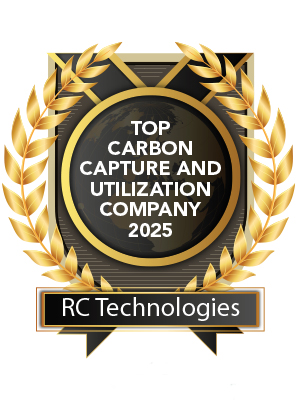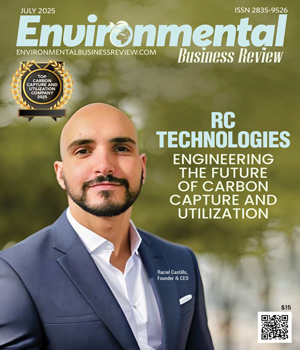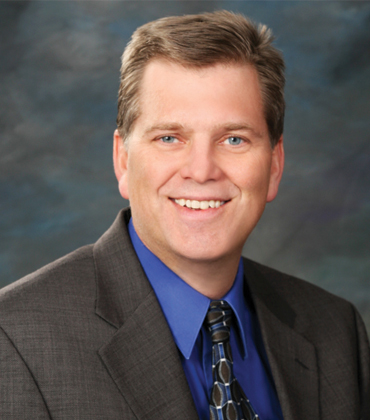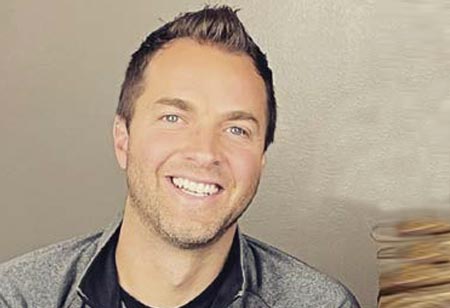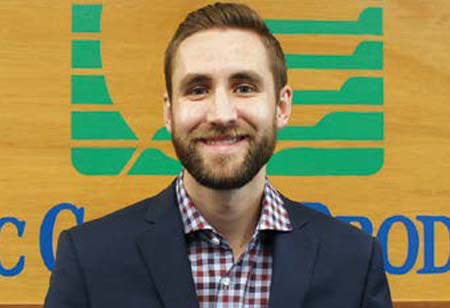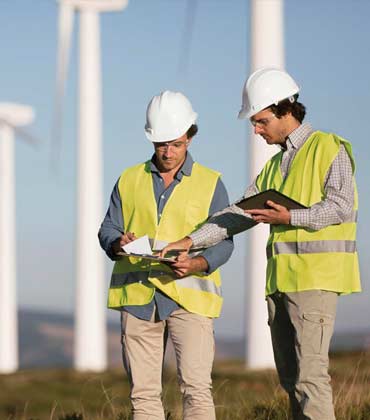Thank you for Subscribing to Environmental Business Review Weekly Brief
Environmental Business Review: Specials Magazine
RC Technologies (RCT) was founded on a bold vision—to lead the way in carbon capture innovation. The goal was to swiftly and effectively to tackle one of the planet’s most pressing challenges, climate change. The pressure to act on climate change is intensifying across sectors. Regulations are tightening, investors are demanding transparency and customers expect real progress. Yet, many companies remain reliant on outdated carbon capture systems that are costly, complicated and difficult to scale. RCT closes this gap with a simpler, faster and more powerful way to turn carbon into value. As a direct carbon capture and utilization company, it enables industries to do more than reduce emissions. It helps them turn carbon into an economic asset. Through a proprietary, passive capture system, RCT removes CO₂ directly from the atmosphere and industrial exhaust streams. It converts it into high-performance materials that power clean technologies and support the circular economy. “We’re here to be the most efficient, aggressive and ambitious carbon capture technology ever built,” says Raciel Castillo, founder and CEO. The Blueprint for Effortless Carbon Capture That mission began in a quiet moment of curiosity. One evening, while listening to a science podcast, Castillo heard a remark about the sheer volume of CO₂ saturating the atmosphere. It wasn’t breaking news. But it struck a chord. “If it got into the atmosphere, there must be a way to remove it” he thought at the time. What followed was a relentless pursuit of knowledge. Late nights were spent pouring over research to understand every facet of carbon capture technology. For Castillo, optimizing the status quo wasn’t enough. His mission was to build a solution that was more efficient, cost-effective and, most importantly, faster than anything available at the time. He envisioned a radically different approach with a modular, flexible infrastructure that would capture emissions from both concentrated and diffuse sources. It needed to be a system that could be deployed rapidly, customized for different environments and—crucially—transform captured CO₂ into valuable outputs like fuel, feedstock and building materials. What started as a personal awakening evolved into a mission to remove the largest volume of greenhouse gases in the shortest time possible.
Top Environmental Consultant Firm 2025
The land looked perfect on paper—eight acres tucked near the city of Mobile in Alabama, quiet and green under a big Southern sky. For the developers who bought the property, it was a blank canvas ready to become something bold: a celebration arena for Mardi Gras and a float barn. But beneath the surface lay a complication no one had planned for. What looked like solid ground was mostly wetlands—jurisdictional, federally protected, and deeply entwined in a web of environmental law. The result? Plans stalled, permits froze, and the project stood on the edge of becoming a very expensive mistake. Then came the call to Ephriam & Associates Environmental Consulting, a comprehensive environmental consulting firm specializing in technical and ecological site assessments. With its expertise, the firm traced every hydrological connection and assembled many pieces of the puzzle through extensive technical analysis, scientific data, and close coordination with relevant agencies to finally reach a shared understanding. It found no ecological link between the site and any protected waters—meaning the wetlands weren’t jurisdictional under federal rules. The conclusion? Not jurisdictional. Not a deal-breaker. The project moved forward, and the original vision remained intact. “Environmental regulations, protections, and conservation policies are ever-evolving. Our company seeks to stay abreast of these changes, and we aim to advise our clients on how to conserve the environment while providing solutions that allow their projects to move forward,” says Troy L. Ephriam, founder and CEO of Ephriam & Associates Environmental Consulting. This is just one of many examples where Ephriam & Associates has found the intersection where progress and environmental protection can coexist. Science Over Speculation Founded by Troy L. Ephriam, a former environmental regulator with the U.S. Army Corps and a past mayor, the company has carved out a critical niche in the environmental consulting space. Its clientele includes government agencies, municipalities, engineers, planners, and developers, for whom it crafts compliance strategies and secures critical permits from local, state, and federal agencies. Its work is rooted in the mandates of the National Environmental Policy Act (NEPA), Section 404 of the Clean Water Act, and Section 10 of the Rivers and Harbors Act. The firm assesses everything from wetland impacts and water quality to threatened species and cultural resources. “At the end of the day, we help clients find balance—between what they want to build and what’s actually permissible within environmental law,” says Ephriam.
Environmental Engineering Consulting Services of the Year 2025
Expertise in environmental services has always been important, but today and in the future, it will become even more important for clients to choose a provider with the right mix of technical expertise, knowledgeable staff and advanced technology. After spending some time talking with Mike Hagemeister, P.E., national director of environmental services at Terracon, it’s clear the company is positioned to lead. Founded in 1965, Terracon has grown steadily and strategically into a leading environmental, geotechnical, facilities, and materials firm, now with over 180 offices and 1,500 environmental professionals across the U.S. However, size and scale are only a snapshot of its impact. Beneath the surface lies Terracon’s identity as an employee-owned firm and a company that sees its work as being at the intersection of the natural and the built world—a point Hagemeister refers to often. “When you look at who we are as a company,” he says, “It really starts with the fact that we’re employee-owned. That ownership means every decision we make matters—not just for our clients, but for everyone who works here.” This shared sense of responsibility—both to one another and to the world we build in—enables Terracon to deliver comprehensive solutions across industries while staying aligned with its environmental and community-centered goals. Engineering Urban Renewal Terracon’s portfolio includes work in nearly every sector—from transportation and infrastructure to commercial real estate, energy, and manufacturing. Yet the common thread running through all its projects is the attention to detail on environmental stewardship and long-term community benefit. One example is Terracon’s work with Parks for Downtown Dallas, a nonprofit organization focused on increasing green space in the heart of one of America’s fastest-growing cities. The organization had a bold vision: reclaim underutilized urban lots and transform them into public parks. The goal was to create recreational areas and vibrant, sustainable gathering places that could improve the quality of life for residents and visitors alike.
CXO INSIGHTS
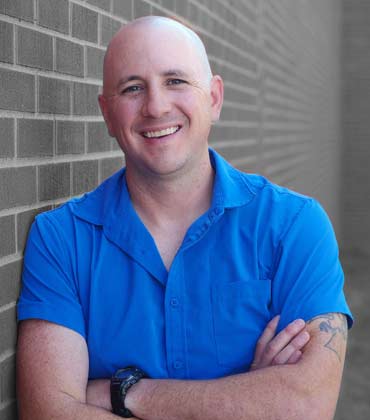
Mining Engineering
Garrick Goodheart, Environmental and Engineering Manager, Westmoreland Mining
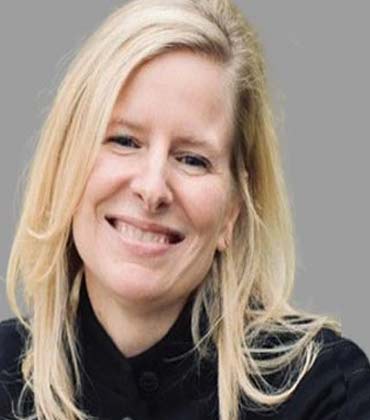
Integrating Environmental Stewardship in Energy Businesses
Christy Clark, Director, Environmental Management and Safety, DTE Energy
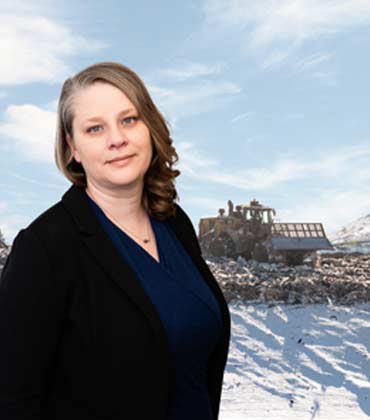
From Landfill To Leadership: Driving Sustainability In The Waste Industry
Amy Davies, P.E., Regional Environmental & Compliance Manager, Casella Waste Systems, Inc
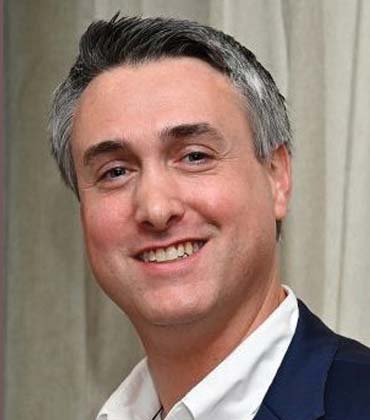
Compensated Fuels: Enabling Energy Transition W/O Breaking The Bank. The Role Of Compensated Fuels In A Balanced Energy Transition
Jonathan (J.W.) Hackett, Senior Director, Environmental Products, Global Partners LP
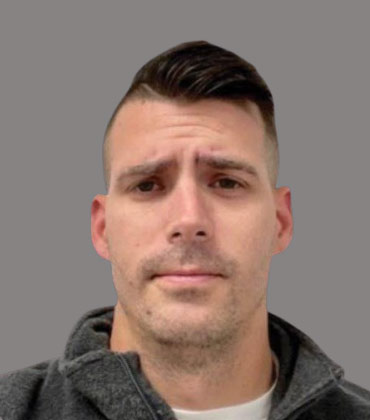
Safety First, Innovation Always: Shaping the Future of EHS
Dustin Workman, Environmental, Health and Safety Manager, Sysco
IN FOCUS
Transforming Carbon Waste into Wealth: The Evolving CCU Industry
A major obstacle in capturing and using carbon is the cost-effectiveness and efficiency of the technology employed. Today's methods used to capture CO2 are costly and energy-intensive, particularly in major industrial sites.
Expanding Role of Environmental Engineering Consulting Services in Sustainable Development
Collaborations with academic institutions and professional certification programs can ensure a steady pipeline of talent proficient in technical and regulatory domains.
EDITORIAL
Shaping Tomorrow’s Environment Today
Environmental performance is no longer a secondary consideration— it’s a strategic imperative. At the forefront of this transition are environmental engineering service providers and carbon capture and utilization (CCU) innovators, driving measurable change where it matters most: within the core of industrial operations. Environmental engineering firms today are more than compliance advisors. They serve as strategic partners, helping organizations navigate tightening regulations while improving operational resilience. Their scope spans ecological audits, impact assessments, remediation programs and advanced modeling for risk mitigation. The best among them embed sustainability into business decisions, turning environmental responsibility into a source of competitive advantage. Simultaneously, companies specializing in carbon capture and utilization are garnering significant attention for their innovative approach to reducing emissions. By capturing CO₂ directly from flue gases and converting it into valuable products, from e-fuels and industrial chemicals to sustainable concrete, these companies are redefining carbon not as waste but as a feedstock. For hard-to-abate sectors, CCU offers a realistic and scalable pathway to decarbonization that aligns with both climate targets and economic viability. This edition of Environmental Business Review explores how environmental engineers and CCU pioneers are shaping the next frontier of industrial innovation. Featured thought leaders include Jonathan (J.W.) Hackett, senior director of environmental products at Global Partners LP, who emphasizes a pragmatic mindset, one focused on continuous improvement, transparency and action today, not idealistic perfection tomorrow. Amy Davies, P.E., regional environmental & compliance manager at Casella Waste Systems, Inc., explores ways to bridge the talent gap in environmental engineering, encouraging aspiring engineers to embrace their strengths, particularly communication, and take an active role in shaping a sustainable future. The magazine also spotlights leading companies like RC Technologies, a carbon capture and utilization company transforming emissions into valuable resources. Its NextGen technology extracts CO₂ from both atmospheric and point-source locations, converting it into high-value materials. We hope this edition inspires new thinking and strategic action toward a more regenerative industrial future.

